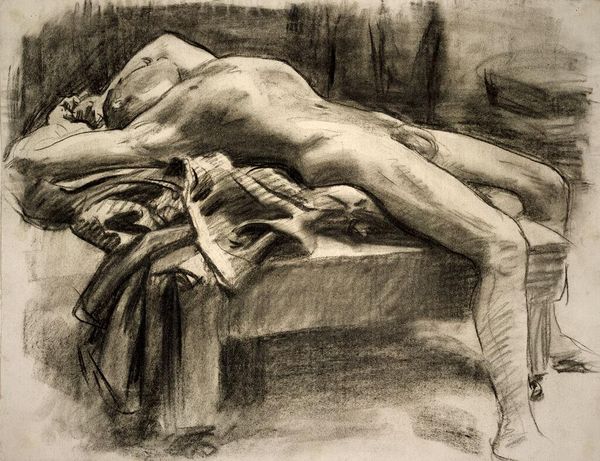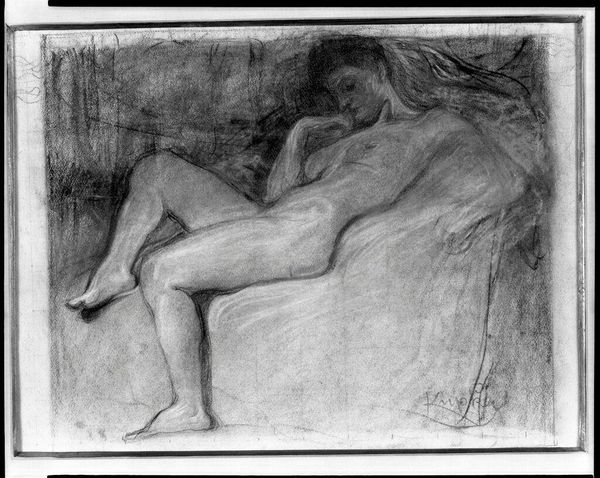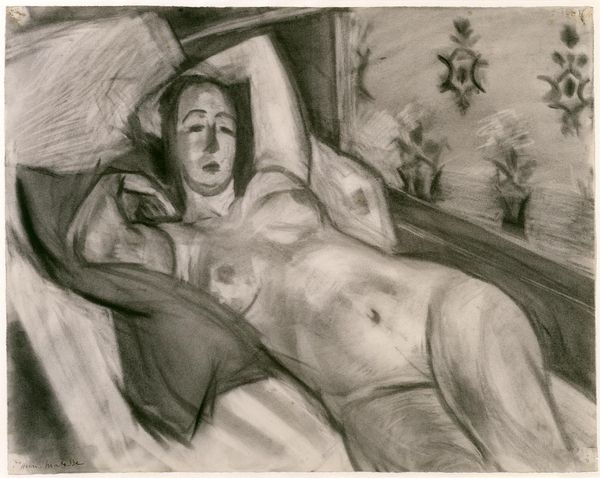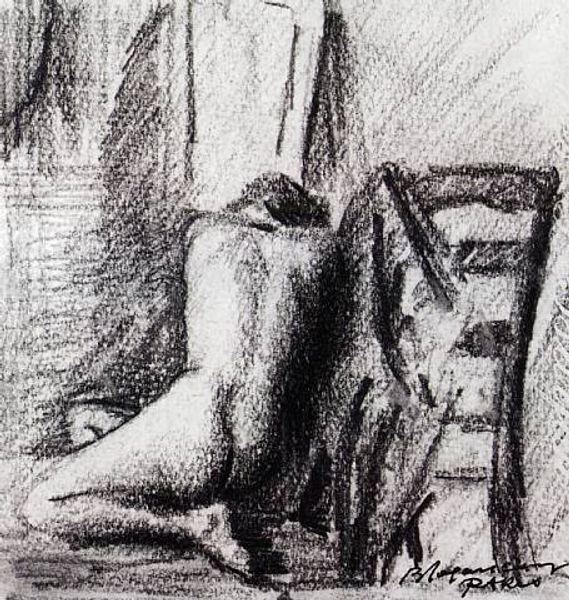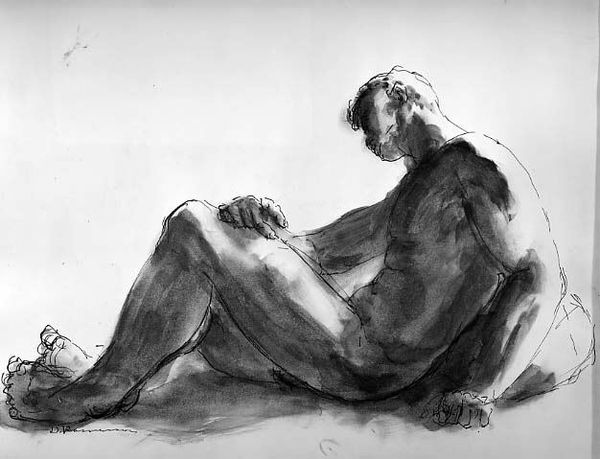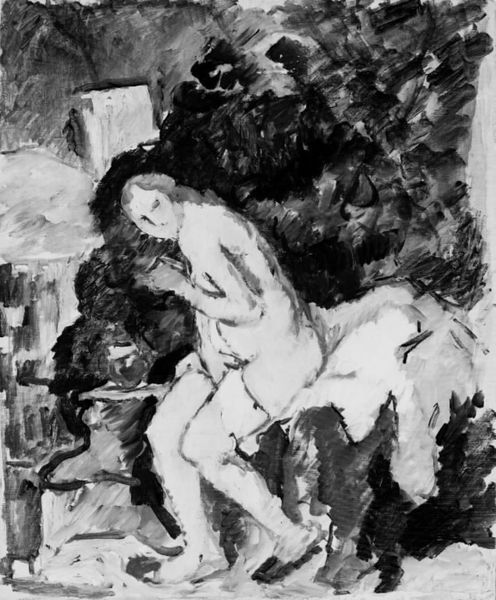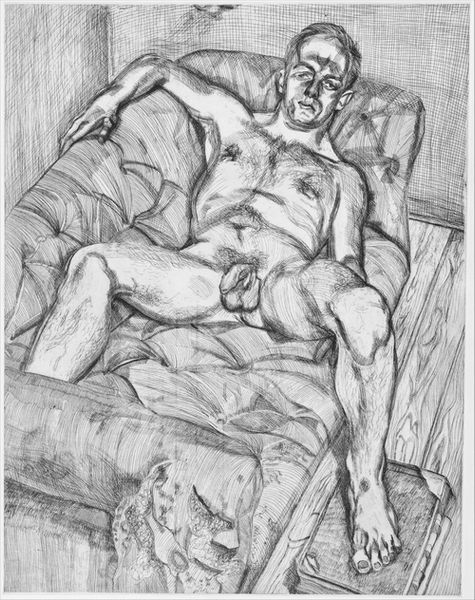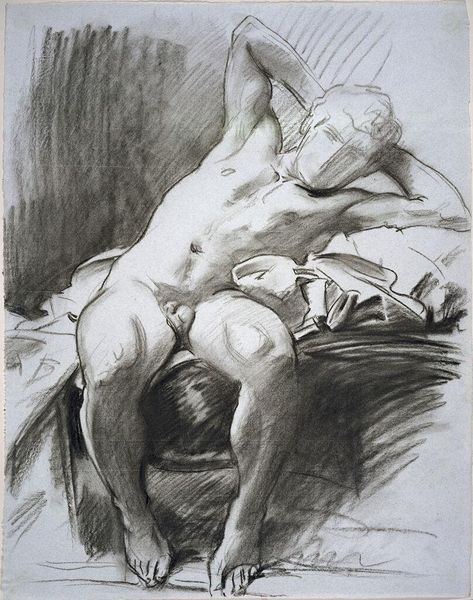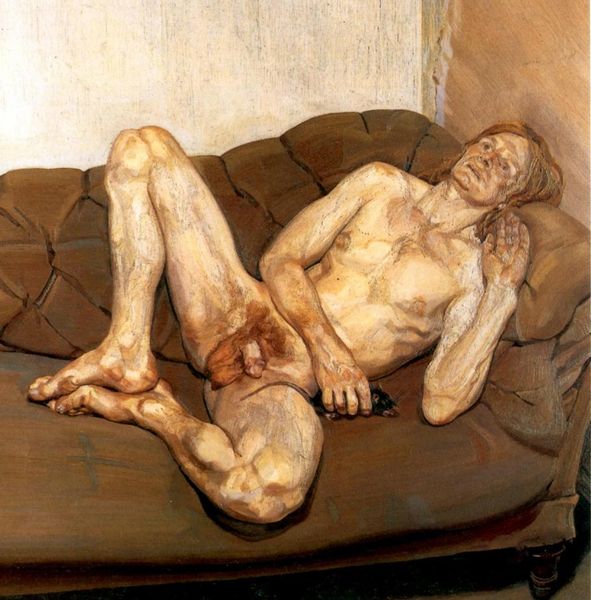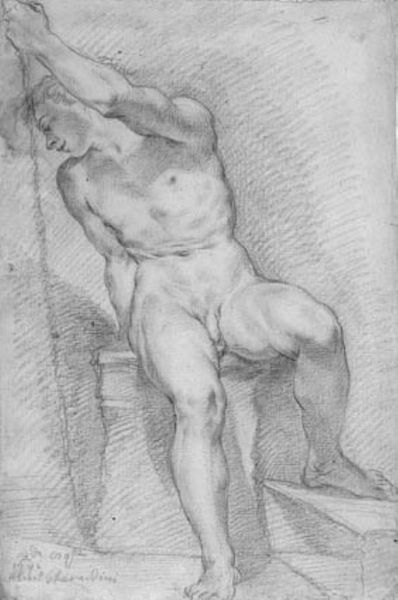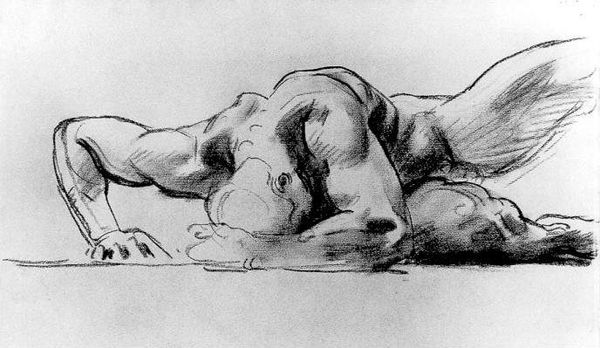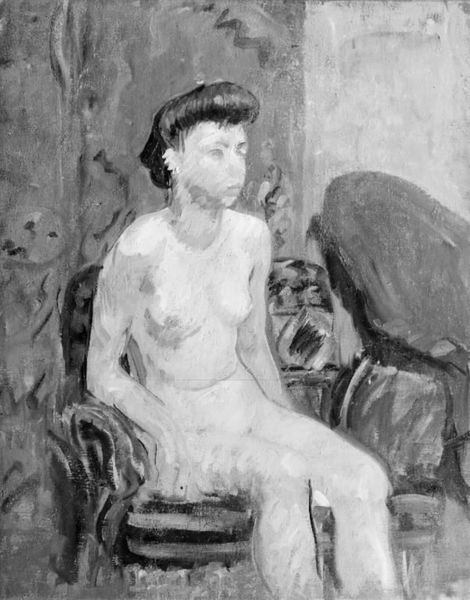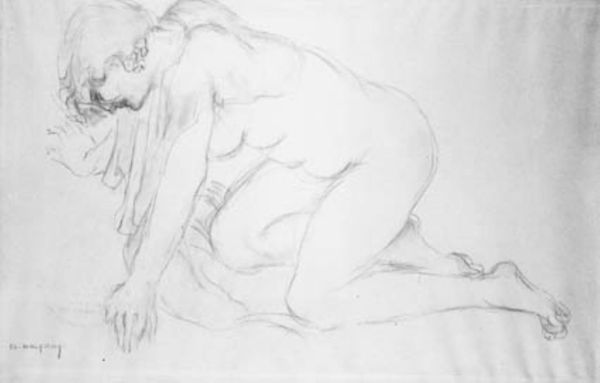
painting, oil-paint
#
painting
#
oil-paint
#
charcoal drawing
#
figuration
#
intimism
#
portrait drawing
#
nude
Dimensions: 62 cm (height) x 81 cm (width) (Netto)
Curator: It’s interesting to consider Othon Friesz's "Female Nude" from 1923, currently housed at the SMK. Editor: There's a starkness to it. Even though it’s a nude, it doesn’t feel particularly sensual. More like an exploration of form, rendered in grayscale, as though to avoid any distractions of color from the body's structure. Curator: I think the social and historical context here is vital. The post-war period saw artists wrestling with traditional representation, and Friesz was no exception. Museums were, at the time, reassessing the depiction of the body itself. Editor: Precisely! You see the thick application of oil paint, almost sculptural in places, giving the body weight and presence. Consider the economic realities—was Friesz choosing readily available, less expensive pigments? The visible brushstrokes indicate the speed and intensity of the work. There's a physicality to its production that I find compelling. Curator: Indeed, but it’s also reflecting a societal shift. The intimacy feels very posed and internal rather than provocative; consider the way Friesz positions her in an environment suggesting bourgeoise tastes that shaped many narratives of beauty at the time. Galleries began catering to that idea. Editor: You're right. The chair she reclines upon speaks of class, status, manufactured beauty, perhaps hinting at a transaction beyond mere artistic expression, who commissions nudes and why! What materials did she use in the canvas prep? And the source for pigments, even if less expensive? Curator: And it’s important to recall that how such images circulated then was through established exhibitions, museums playing a vital gatekeeping role in deciding what was appropriate to display, what constituted "art." Editor: Examining Friesz’s artistic labor under the societal influence from patrons, to medium constraints, forces us to acknowledge artmaking as embedded within very specific material and social circumstances. Curator: Seeing it in this light allows for a much deeper engagement. It allows us to engage with the historical production conditions. Editor: Agreed.
Comments
No comments
Be the first to comment and join the conversation on the ultimate creative platform.
